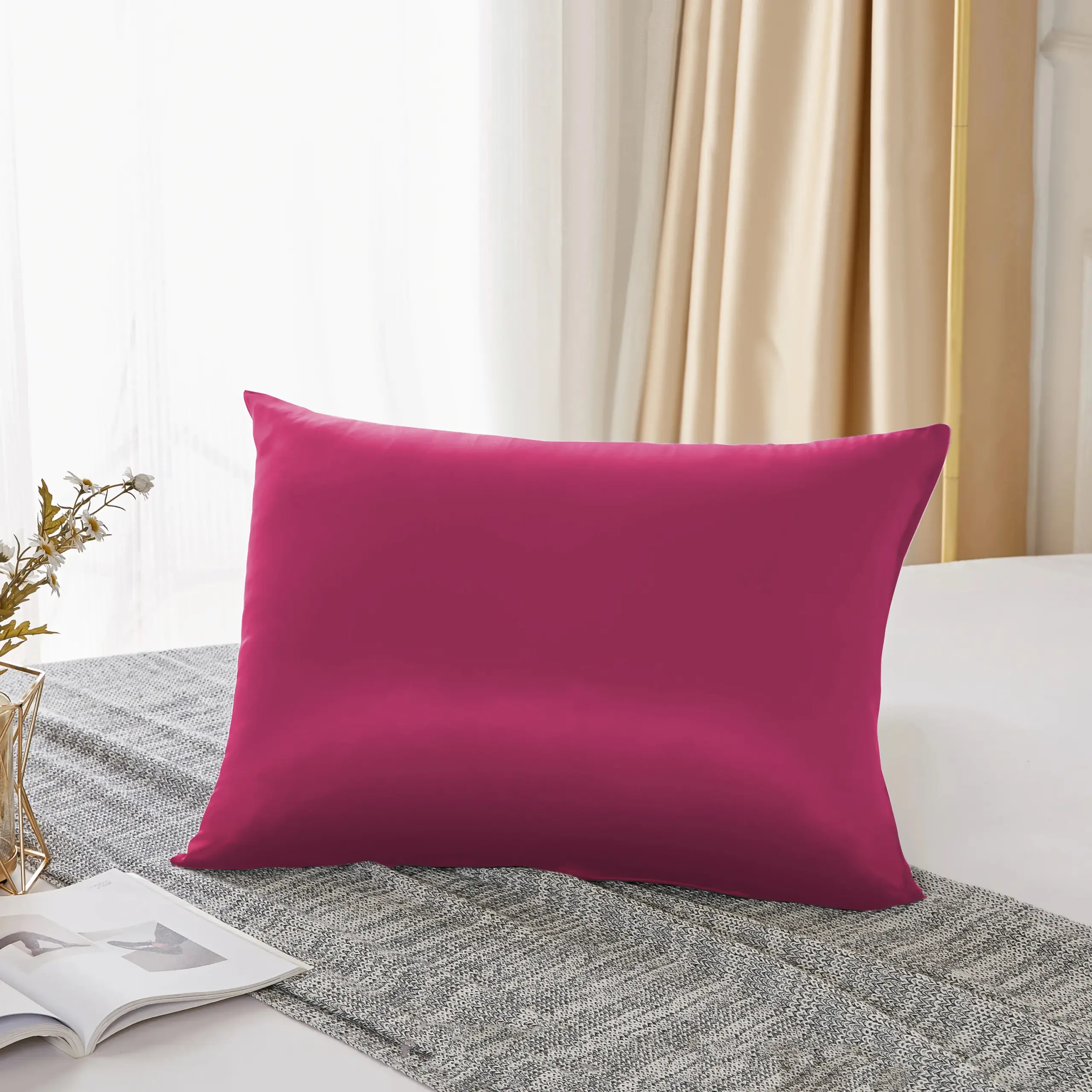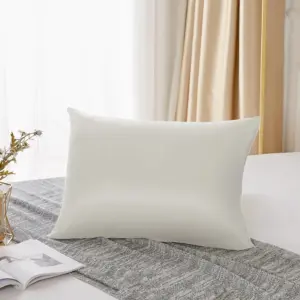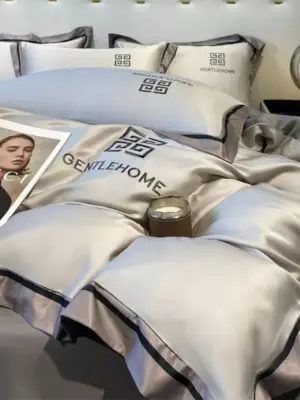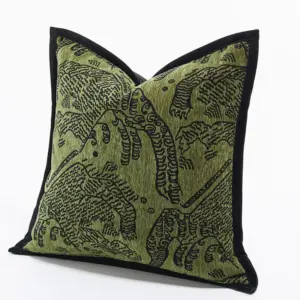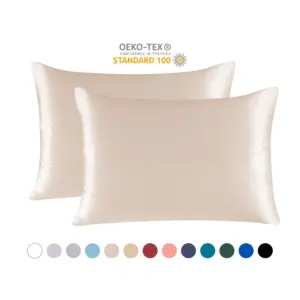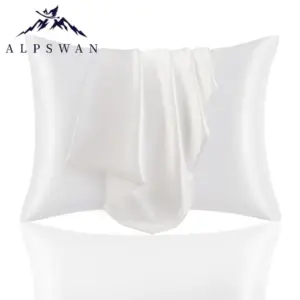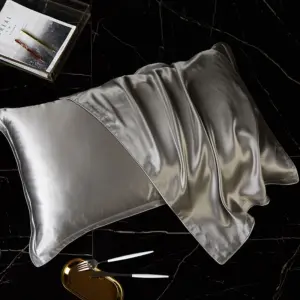Introduction: Understanding Silk’s Impact on Hair Health
Yes, silk pillowcases can significantly improve hair health. While they may seem like just another luxury bedding option, these smooth fabric wonders offer genuine benefits for your tresses. The secret lies in silk’s unique properties – its incredibly smooth surface and protein-rich natural fibers work together to treat your hair with exceptional gentleness during sleep.
Traditional cotton pillowcases, while comfortable, can create friction against your hair strands. This friction leads to common hair frustrations like morning frizz, stubborn tangles, and even breakage over time. Cotton also absorbs moisture, potentially drawing natural oils away from your hair and leaving it dry.
Silk, by contrast, has been treasured for centuries not just for its luxurious feel but for its beauty-enhancing properties. Here’s what makes silk pillowcases particularly beneficial for hair health:
- Minimal friction against hair strands
- Natural moisture retention properties
- Reduced breakage and split ends
- Preservation of hairstyles overnight
- Support for overall scalp health
These benefits aren’t just marketing claims – they’re rooted in the scientific properties of silk fibers and supported by both research and the experiences of hair care professionals. Understanding whether silk pillowcases are good for hair is the first step toward transforming your nightly routine into a hair care treatment.
The Science Behind Silk Pillowcases and Hair Health
To understand why silk offers superior hair protection, we need to examine its molecular structure. Unlike synthetic materials or plant-based cotton, silk is composed of natural protein fibers – primarily sericin and fibroin. These protein structures share similarities with the keratin protein that makes up your hair, creating a uniquely compatible surface.
The Molecular Advantage
Under a microscope, silk fibers appear incredibly smooth and uniform compared to cotton’s rough, irregular surface. This microscopic difference has major implications for your hair. When you move during sleep (which happens 20-30 times per night on average), your hair slides easily across silk’s surface instead of catching and pulling against cotton’s rough texture.
This smoothness is measured scientifically as a low coefficient of friction. The lower this number, the less resistance exists between two surfaces – in this case, between your pillowcase and hair strands. How silk pillowcases reduce hair breakage comes down to this fundamental physical property.
Moisture Management Properties
Silk is naturally hydrophobic (water-repellent) compared to cotton’s hydrophilic (water-loving) nature. Cotton can absorb up to 27% of its weight in moisture, while silk absorbs only about 11%. This means silk won’t draw away your hair’s natural moisture or expensive conditioning products during sleep.
Quality Matters: Understanding Momme Weight
The quality of silk is measured in momme weight, similar to thread count in cotton. Higher momme numbers indicate denser, more durable silk that provides better hair protection. Quality silk pillowcases typically range from 19-25 momme, with understanding silk momme weight being crucial for selecting a pillowcase that delivers optimal hair benefits.
The science is clear: when your hair glides across silk’s smooth protein fibers rather than catching on rougher fabrics, the cumulative effect on hair health can be substantial – less breakage, reduced frizz, and better moisture retention.
5 Key Hair Benefits of Sleeping on Silk Pillowcases
The scientific properties of silk translate into several tangible benefits for your hair health. Here are the five most significant advantages:
1. Prevents Breakage and Split Ends
The smooth surface of silk significantly reduces friction against your hair strands. Every time you move your head during sleep on a cotton pillowcase, your hair experiences mechanical stress that can damage the hair shaft. This is particularly problematic for fine or fragile hair types, where the protective outer cuticle layer is already more vulnerable.
Silk’s low-friction surface allows hair to glide freely, preventing the repeated tugging that weakens strands and leads to breakage. Over time, this gentle treatment helps maintain hair strength and integrity, reducing those frustrating split ends that require regular trimming.
2. Reduces Frizz and Tangling
Frizz occurs when the hair cuticle is roughed up, allowing moisture to enter and swell the strand. The smooth texture of silk helps the cuticle layer remain flat and sealed, which is essential for maintaining sleek, frizz-free hair.
Additionally, the frictionless surface prevents hair strands from catching on each other and forming knots during sleep. For those with longer hair, this means significantly less time spent detangling in the morning and less damage from brushing through sleep-formed knots.
3. Maintains Hair’s Natural Moisture Balance
Unlike cotton and other absorbent fabrics, silk doesn’t wick moisture away from your hair. This moisture-preserving quality helps maintain your hair’s natural hydration levels and allows leave-in conditioners and overnight treatments to stay where they belong – in your hair, not your pillowcase.
For people with naturally dry or chemically processed hair, this moisture retention is particularly valuable in preventing the brittleness that leads to breakage and dullness.
4. Preserves Hairstyles Longer
Anyone who has gone to sleep with perfect curls or a fresh blowout only to wake up with flattened or distorted hair understands this struggle. Silk allows your hair to slip and slide as you move during sleep rather than being crushed and creased.
The benefits of silk for transformative sleep extend to your styling efforts, helping preserve curls, waves, and blowouts for extra days. This not only saves time on daily restyling but also reduces heat damage from additional styling tool use.
5. Supports Healthier Scalp Environment
A healthy scalp is the foundation of healthy hair. Silk’s temperature-regulating properties help maintain comfortable sleeping conditions, while its hypoallergenic nature makes it resistant to dust mites, mold, and other potential irritants.
Additionally, by reducing friction on the hair, silk pillowcases minimize tension and pulling at the hair root level, potentially reducing stress on follicles for overall healthier hair growth conditions.
For those interested in experiencing these benefits firsthand, exploring quality silk pillowcases is the first step toward better hair health through improved sleep habits.
Silk Vs. Other Pillowcase Materials: How They Affect Your Hair
To fully appreciate silk’s advantages for hair health, it’s helpful to compare it with other common pillowcase materials. This comparison reveals why silk consistently outperforms alternatives for hair protection.
| Feature | Silk | Cotton | Polyester | Satin |
|---|---|---|---|---|
| Friction Level | Very Low | High | Medium | Low |
| Moisture Absorption | Low (11%) | High (27%) | Low | Low |
| Breathability | Excellent | Good | Poor | Poor |
| Heat Regulation | Natural | Moderate | Poor | Poor |
| Durability | High (with proper care) | High | Medium | Variable |
| Hair Glide | Smooth | Rough | Moderate | Smooth |
| Price Point | Higher | Lower | Lowest | Low-Medium |
Cotton: Common but Problematic
Cotton is the most common pillowcase material, but it’s far from ideal for hair health. Its rough, absorbent fibers create significant friction against hair strands, leading to cuticle damage, frizz, and breakage. Cotton also draws moisture away from hair, potentially leaving it dry and brittle by morning.
Understanding the specific differences between silk vs cotton pillowcases for hair can help clarify why many hair care professionals recommend making the switch.
Satin: The Common Confusion
Many consumers confuse satin with silk, but they’re fundamentally different. Satin refers to a weave pattern, not a material. Most satin pillowcases are made from polyester, which is a synthetic material. While satin provides a smooth surface that reduces some friction, it lacks silk’s natural protein structure and moisture management properties.
Additionally, polyester satin doesn’t breathe well, potentially causing increased heat and sweat around the head and scalp during sleep – conditions that can contribute to oiliness and scalp issues.
The Silk Advantage
Silk stands apart because it combines multiple beneficial properties: extremely low friction, natural temperature regulation, minimal moisture absorption, and a protein-based structure that’s compatible with hair’s own keratin protein. This unique combination explains why genuine silk pillowcases consistently outperform alternatives for hair protection and maintenance.
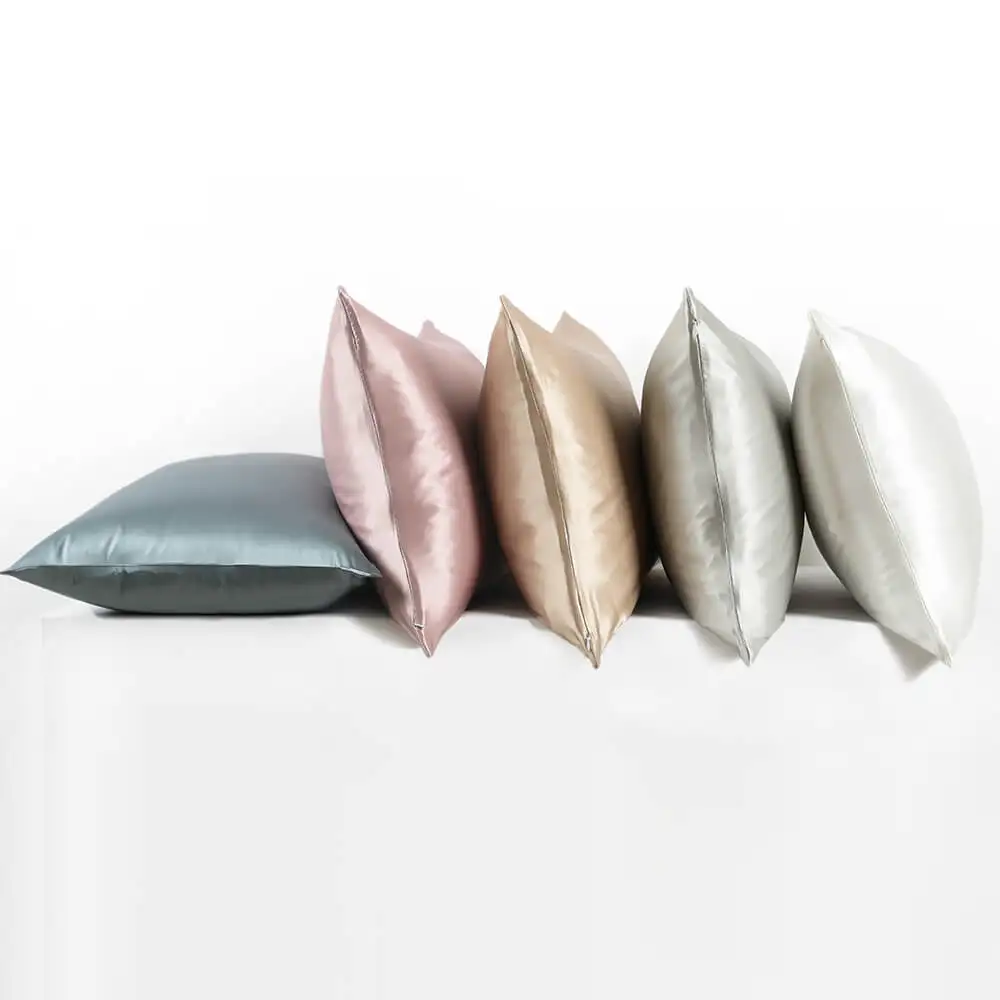
Hair Types That Benefit Most from Silk Pillowcases
While silk pillowcases offer advantages for all hair types, certain hair textures and conditions see particularly dramatic benefits:
Curly and Textured Hair
People with curly, coily, or highly textured hair often experience the most noticeable improvements from switching to silk pillowcases. Curly hair is structurally more prone to:
* Moisture loss through the naturally raised cuticle
* Frizz from environmental factors and friction
* Breakage from mechanical stress
* Pattern disruption during sleep
The smooth surface of silk helps preserve curl definition and pattern integrity overnight, while reducing the friction that causes frizz. Silk pillowcases for curly hair care can be a game-changer, significantly reducing morning maintenance time and preserving styles.
Fine or Fragile Hair
Fine hair has a smaller diameter than other hair types, making it inherently more vulnerable to breakage from friction. The gentle treatment provided by silk pillowcases is particularly valuable for this hair type. Many with fine hair report less breakage and improved hair density over time after switching to silk.
Color-Treated or Chemically Processed Hair
Hair that has been colored, bleached, permed, or chemically straightened has already experienced structural changes that compromise its strength. These treatments often leave the cuticle more raised and vulnerable to damage.
Silk pillowcases help preserve color treatments longer by reducing friction that can wear away color molecules. Additionally, the moisture retention properties help keep chemically treated hair better hydrated, reducing the brittleness that often follows processing.
Long Hair
The longer the hair, the more surface area is exposed to friction during sleep. Those with long hair frequently experience significant tangling on traditional pillowcases, leading to breakage during morning detangling. Silk’s smooth surface dramatically reduces this overnight tangling.
For optimal protection, many hair specialists recommend Mulberry silk pillowcases – the highest quality silk available for bedding – which offers the ideal balance of smoothness and durability.
Expert Opinions: What Dermatologists and Hairstylists Say
The professional beauty community has embraced silk pillowcases as more than just a luxury item – they’re increasingly viewed as a practical hair care tool. Here’s what experts in the field have to say about their benefits:
Dermatologists point to several scientific principles that support silk’s benefits for hair. They note that reducing friction on hair strands helps preserve the integrity of the cuticle layer – the outermost protective layer of each hair strand. When this cuticle remains smooth and intact, hair appears shinier, feels softer, and becomes less prone to breakage.
Many dermatologists also appreciate silk’s hypoallergenic properties, which can benefit the scalp environment. A healthier scalp is the foundation for healthier hair growth, making this an often-overlooked advantage of silk pillowcases.
Hairstylists, particularly those working with textured, curly, or color-treated hair, often recommend silk pillowcases as part of their clients’ maintenance routines. They observe that clients who sleep on silk generally require less corrective styling, experience better color retention, and maintain the results of professional treatments longer.
For those considering the investment, many experts recommend standard size silk pillowcases as an excellent starting point, as they fit most pillows and provide the full range of hair benefits.
The consensus among professionals is clear: while silk pillowcases shouldn’t replace proper hair care routines, they represent a passive yet effective way to protect hair health during the significant amount of time we spend sleeping.
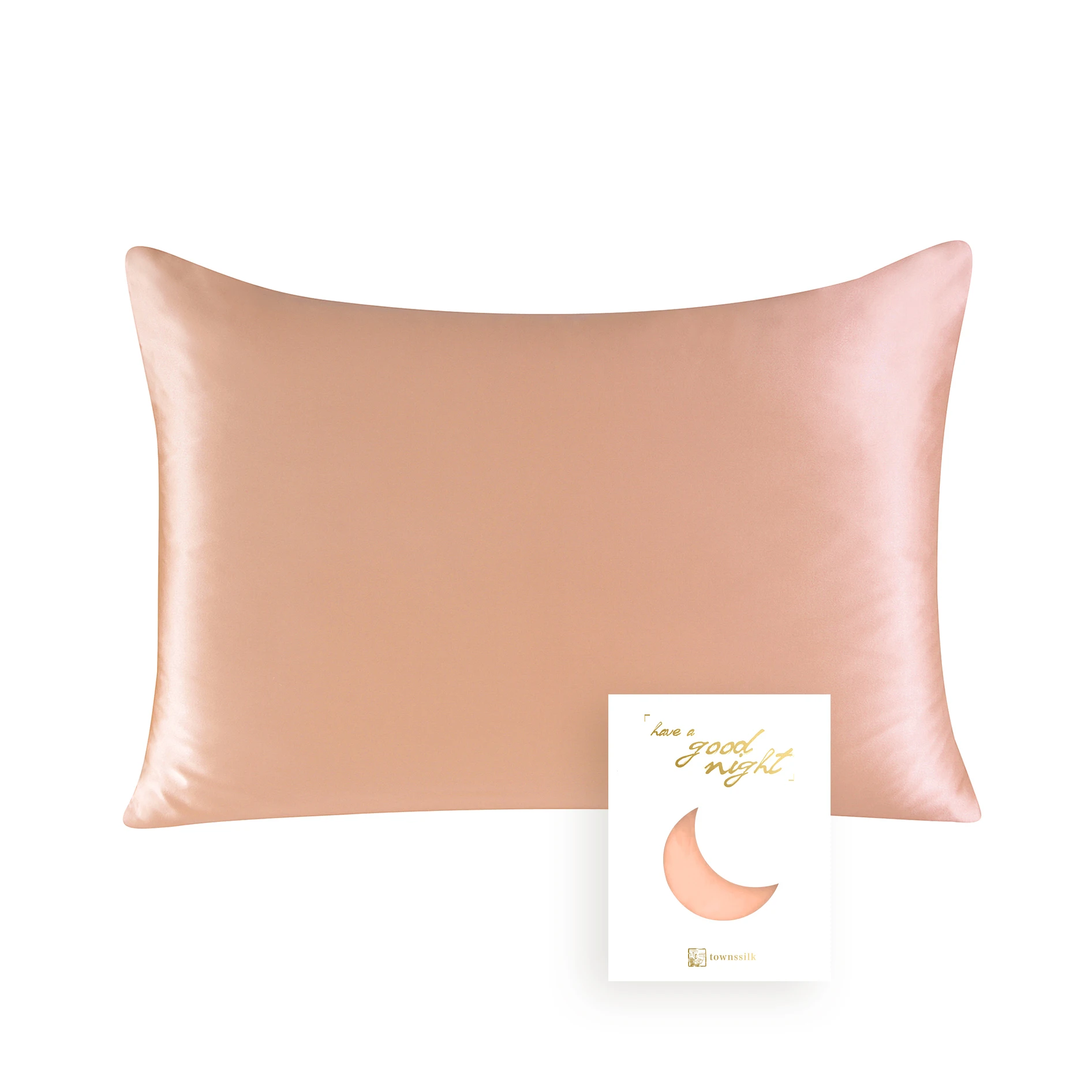
Setting Realistic Expectations: What Silk Pillowcases Can’t Do
While the benefits of silk pillowcases for hair health are substantial and well-supported, it’s important to maintain realistic expectations about what they can and cannot achieve:
Not a Solution for Hair Loss
Silk pillowcases can reduce breakage caused by friction, but they cannot address genetic hair loss, hormonal issues, or medical conditions that cause thinning hair. The question of whether silk pillowcases help hair needs to be understood within proper context – they help preserve the hair you have but don’t generate new growth.
Complement, Not Replacement
Silk pillowcases work best as part of a comprehensive hair care routine. They cannot compensate for poor hair care practices, heat damage, or inadequate nutrition. Think of them as preserving your hair’s condition rather than dramatically transforming damaged hair.
Consistency Is Key
Benefits accumulate over time with consistent use. Many users expect immediate, dramatic results after one night, but the real advantages become apparent after weeks of reduced friction and better moisture retention.
Quality Matters
Not all silk pillowcases provide equal benefits. Low-quality “silk-like” materials or blends with low momme weights won’t deliver the same level of protection as pure, high-quality mulberry silk.
Environmental Factors Still Apply
Even with a silk pillowcase, environmental factors like humidity, hard water, and styling product buildup can still affect hair health. Silk provides significant protection, but it’s not a complete shield against all potential hair stressors.
How to Choose the Right Silk Pillowcase for Hair Benefits
To maximize the hair health benefits of silk pillowcases, selecting the right product is crucial. Here’s what to consider when making your purchase:
Material Quality
Look specifically for 100% Mulberry silk, which offers the finest, most uniform silk fibers available. This material provides the smoothest surface and greatest durability, essential for ongoing hair protection.
Momme Weight
The ideal range for hair benefits is between 19-25 momme. Lower than 19 momme may not provide sufficient durability, while higher than 25 momme offers minimal additional benefits at a higher cost.
Weave Type
Charmeuse weave is preferred for hair care as it creates the smoothest surface with maximum slip. This weave pattern places more of the smooth silk fibers on the surface where they contact your hair.
Construction Quality
Look for pillowcases with:
* Hidden zippers that won’t catch or snag hair
* French seams for durability
* Proper sizing for your pillows (standard, queen size silk pillowcases, or king)
* Color-fast dyes that won’t transfer to hair or skin
Certifications
Reputable silk products often carry OEKO-TEX Standard 100 certification, ensuring they’re free from harmful substances. This is particularly important since your face and hair have direct, prolonged contact with the material.
Color Considerations
While color choice doesn’t affect hair benefits, darker colors can show less staining from facial products or hair oils, potentially maintaining their appearance longer.
Beyond hair benefits, many people appreciate that silk is also good for sensitive skin, making it a multi-benefit investment in your overall beauty routine.
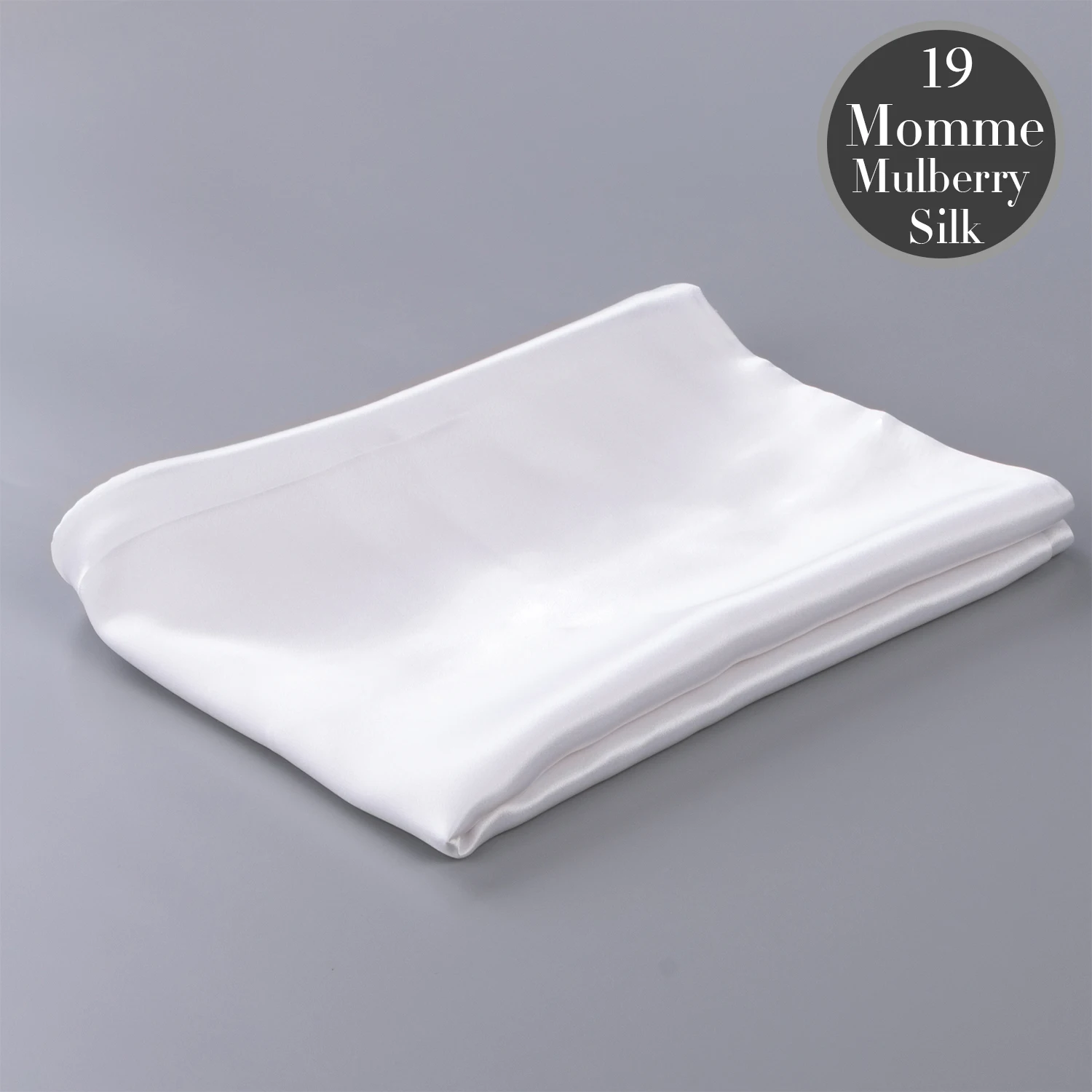
King Size Silk Pillowcases, Mulberry Silk Pillowcases, Queen Size Silk Pillowcases
Price range: $94.96 through $121.56 Select options This product has multiple variants. The options may be chosen on the product page100% Silk Sheets, Queen Size Silk Fitted Sheet, Queen Size Silk Pillowcases, Queen Size Silk Sheets
Price range: $259.05 through $284.13 Select options This product has multiple variants. The options may be chosen on the product pageQueen Size Silk Pillowcases, Standard Size Silk Pillowcases
Price range: $121.49 through $127.57 Select options This product has multiple variants. The options may be chosen on the product page100% Silk Sheets, Mulberry Silk Pillowcases, Mulberry Silk Sheets
Price range: $105.03 through $121.45 Select options This product has multiple variants. The options may be chosen on the product pageStandard Size Silk Pillowcases
$76.72 Select options This product has multiple variants. The options may be chosen on the product pageMulberry Silk Pillowcases, Standard Size Silk Pillowcases
Price range: $64.60 through $181.26 Select options This product has multiple variants. The options may be chosen on the product page
Proper Care for Your Silk Pillowcase to Maintain Benefits
To ensure your silk pillowcase continues providing optimal hair benefits, proper care is essential. Following these guidelines will help maintain both the luxurious feel and protective properties:
Washing Instructions
- Hand wash or use your washing machine’s delicate cycle
- Use cold water only (under 86°F/30°C)
- Select a mild detergent specifically formulated for silk or delicates
- Avoid bleach, fabric softeners, or enzyme-containing detergents
- Turn the pillowcase inside out before washing
- Wash separately from rough fabrics like denim
Drying Recommendations
- Never wring out silk – gently press between towels to remove excess water
- Air dry flat on a clean towel away from direct sunlight
- Avoid hanging, which can stretch the fabric
- Never use a clothes dryer, even on low heat
Storage Tips
- Store fully dry in a cool, dry place
- Avoid plastic bags which can trap moisture
- Keep away from direct sunlight which can fade colors
Washing Frequency
For optimal hair benefits and hygiene, wash your silk pillowcase every 7-10 days. This balances cleanliness with minimizing wear from washing.
With proper care, a quality silk pillowcase can last for years while continuing to provide exceptional hair protection. King size silk pillowcases and other sizes all require the same careful maintenance to preserve their benefits.
Frequently Asked Questions About Silk Pillowcases and Hair Health
Is satin as good as silk for hair benefits?
No, satin isn’t equivalent to silk for hair benefits. Satin refers to a weave pattern, not a material, and is typically made from polyester. While satin provides some smoothness, it lacks silk’s protein structure, moisture management properties, and breathability. Silk’s natural protein fibers offer unique benefits that synthetic satin cannot match, including better temperature regulation and hypoallergenic properties.
How long before I notice improvements in my hair?
Most users begin noticing less morning frizz and tangling within the first week. More significant benefits like reduced breakage and improved moisture balance typically become apparent after 2-4 weeks of consistent use. Remember that silk pillowcases prevent damage rather than repair it, so the full benefits accumulate over time as new, healthier hair growth replaces damaged ends.
Can silk pillowcases help with hair growth?
Silk pillowcases don’t directly stimulate hair growth, but they can create conditions that support healthier growth. By reducing breakage, preventing moisture loss, and minimizing friction on the scalp, silk pillowcases help preserve the hair you grow. This often creates the appearance of improved growth as less hair is lost to breakage. Different pillowcase materials for healthy hair have varying impacts on hair retention and overall condition.
Are silk pillowcases worth the investment?
For many people, especially those with fragile, curly, or processed hair, silk pillowcases are definitely worth the investment. When you consider the cost of hair products, treatments, and styling time saved, a quality silk pillowcase often pays for itself. Additionally, with proper care, silk pillowcases last for years, making the per-use cost quite reasonable.
Do silk pillowcases need special cleaning products?
While special silk detergents are available, they aren’t strictly necessary. Any mild, enzyme-free detergent labeled for delicates will work well. The most important factors are using cold water, gentle agitation, and avoiding harsh chemicals like bleach or fabric softeners. With proper care, your silk pillowcase will continue providing hair benefits for years.

